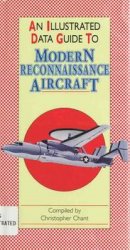In what was later called dollar diplomacy, the U. S. government attempted to control the finances of nations in Latin America and Asia to protect U. S. business interests. Under dollar diplomacy, American administrations applied economic intervention in order to prevent military intervention. As proponents of policy in the William Howard Taft administration said, it used dollars instead of bullets.
President Taft was not as interested in international relations as his predecessor, Theodore Roosevelt. Taft’s secretary of state, Philander C. Knox, worked hard, however, to promote the economic interests of the United States overseas. Although the previous administration had made an agreement with Japan in 1905 to limit its involvement in Manchuria, the Taft administration aggressively sought to increase American economic interests in the region. Knox worked to include the United States in a group of Western powers attempting to build railroads in China. When the European powers agreed to the consortium, the United States tried to exclude the Japanese from the construction of railroads in Manchuria. The railroad building project then collapsed when Japan formed an alliance with Russia.
The Taft-Knox foreign policy in the Caribbean was a continuation of Roosevelt’s policy in the region. The Taft administration sought to keep the European powers out of the region at the same time that it expanded American influence. Under the policies of dollar diplomacy, the Taft administration attempted to replace European investments with investments from the United States.
Taft and Knox were not unwilling to turn to military intervention when financial backing was not enough. The Taft administration sent troops to Nicaragua to support the insurgents when a revolution broke out in 1909. The U. S. troops seized the customs houses until peace was restored. Then Knox increased the economic influence of the United States in the country by encouraging American bankers to provide loans to the insurgent government. Taft sent troops to Nicaragua again two years later when an insurrection broke out. This time, they stayed for over a decade.
See also foreign policy.
Further reading: Thomas O’Brien, The Century of U. S. Capitalism in Latin America (Albuquerque: University of New Mexico Press, 1999); Walter V. Scholes and Marie V. Scholes, The Foreign Policies of the Taft Administration (Columbia: University of Missouri Press, 1970).
—Glen Bessemer




 World History
World History









